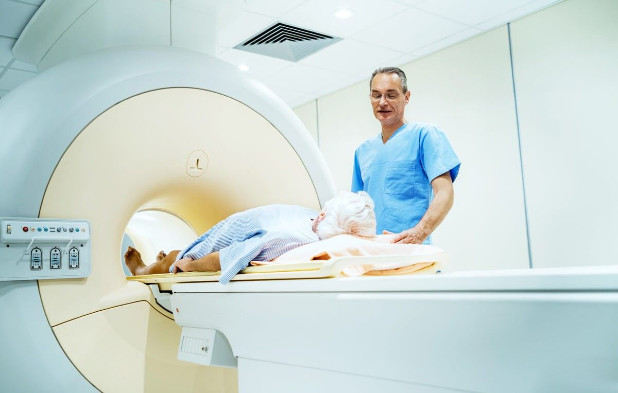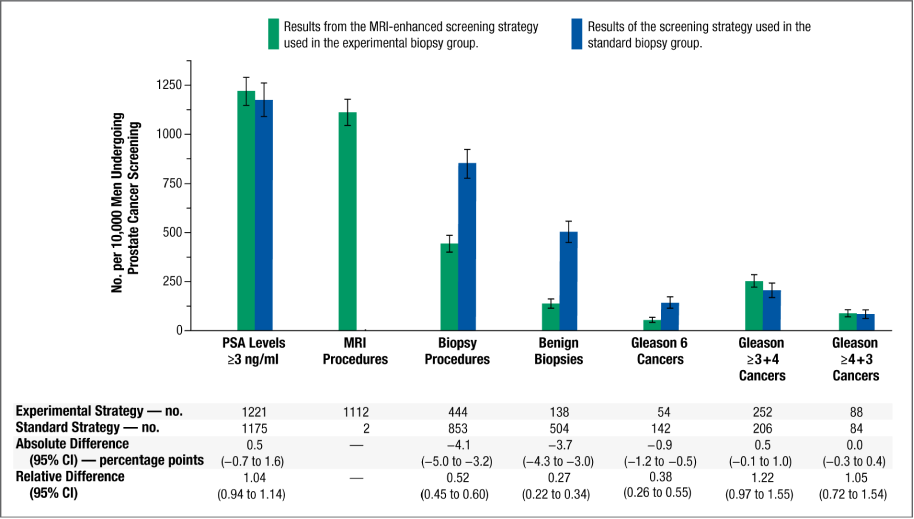MRI and Prostate Health
Between 2014 and 2019, the incidence rate of prostate cancer in the U.S. increased 3% per year. That translates to roughly 100,000 more cases of prostate cancer in that time period alone, about half of which were in advanced stage.1
What’s behind the higher number? There have been increases of about 4.5% per year for regional-stage diagnoses, and distant-stage diagnoses that began as early as 2011 and are being watched closely.1
In addition, localized-stage disease is also on the rise, although the trend is not yet statistically significant. These increases are consistent with reports of an ongoing trend toward higher-grade and advanced-stage at prostate-cancer diagnosis that began around 2010.1
Efforts to recoup the benefit of early prostate cancer detection while mitigating overdiagnosis and overtreatment include a USPSTF upgrade to informed decision making in men aged 55–69.1

The individuals who appear are for illustrative purposes. All persons depicted are models and not real patients or healthcare professionals.
How Radiology Can Help: A Combined Prostate-Specific Antigen (PSA) + MRI Screening Strategy
A recent study by Eklund et al.2 published in the New England Journal of Medicine showed using a combination of MRI and biopsy in men with elevated PSA could lower the incidence of unnecessary biopsies and diagnoses of clinically insignificant cancer, and “help address key barriers impeding implementation of population-based screening for prostate cancer.”
In the study, when normalized to a population of 10,000 men aged 50 to 74 years, compared to the standard biopsy approach, the combined approach in men with positive MRI scans would result in:
409 fewer men having to undergo a biopsy: for a reduction in incidence by
%
366 fewer biopsies
with benign findings:
for reduction in
incidence by
%
88 fewer clinically
insignificant cancers
detected for reduction
in incidence by
%
Elevated PSA Levels, Performed Procedures, and Detected Cancers

Chart based on Eklund M et al. N Engl J Med 2021.
Of the combined PSA/MRI experimental group, researchers concluded:
“The reduced biopsy rate and potential downstream savings that result from less overtreatment offer potential cost savings that may offset the additional costs of MRI.”2
References:
- Siegel, RL, Miller, KD, Wagle, NS,et al. Cancer statistics, 2023. CA Cancer J Clin. 2023 Jan;73(1):17-48.
- Eklund M, Jäderling F, Discacciati, A, et al. MRI-Targeted or Standard Biopsy in Prostate Cancer Screening.
N Engl J Med. 2021 Sep;385(10):908-920.

